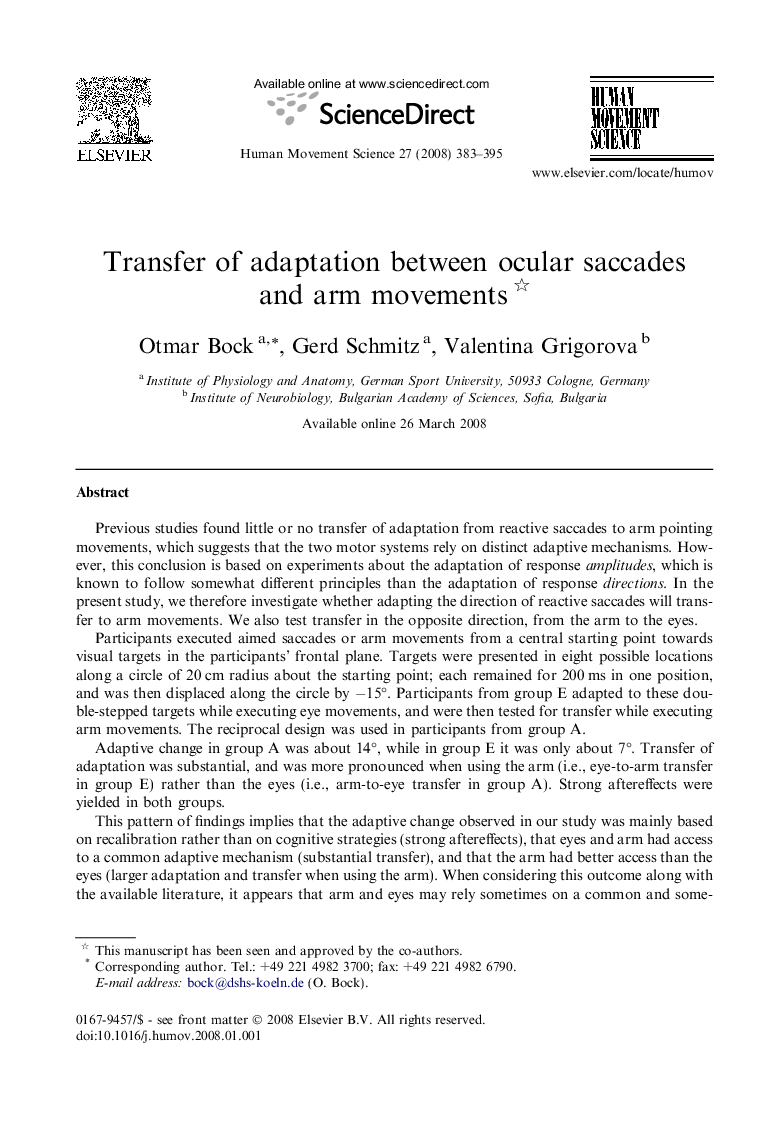| Article ID | Journal | Published Year | Pages | File Type |
|---|---|---|---|---|
| 928957 | Human Movement Science | 2008 | 13 Pages |
Previous studies found little or no transfer of adaptation from reactive saccades to arm pointing movements, which suggests that the two motor systems rely on distinct adaptive mechanisms. However, this conclusion is based on experiments about the adaptation of response amplitudes, which is known to follow somewhat different principles than the adaptation of response directions. In the present study, we therefore investigate whether adapting the direction of reactive saccades will transfer to arm movements. We also test transfer in the opposite direction, from the arm to the eyes.Participants executed aimed saccades or arm movements from a central starting point towards visual targets in the participants’ frontal plane. Targets were presented in eight possible locations along a circle of 20 cm radius about the starting point; each remained for 200 ms in one position, and was then displaced along the circle by −15°. Participants from group E adapted to these double-stepped targets while executing eye movements, and were then tested for transfer while executing arm movements. The reciprocal design was used in participants from group A.Adaptive change in group A was about 14°, while in group E it was only about 7°. Transfer of adaptation was substantial, and was more pronounced when using the arm (i.e., eye-to-arm transfer in group E) rather than the eyes (i.e., arm-to-eye transfer in group A). Strong aftereffects were yielded in both groups.This pattern of findings implies that the adaptive change observed in our study was mainly based on recalibration rather than on cognitive strategies (strong aftereffects), that eyes and arm had access to a common adaptive mechanism (substantial transfer), and that the arm had better access than the eyes (larger adaptation and transfer when using the arm). When considering this outcome along with the available literature, it appears that arm and eyes may rely sometimes on a common and sometimes on distinct adaptive mechanisms, depending on the adapted parameter and on the nature of the motor task.
